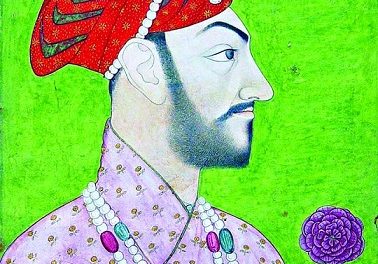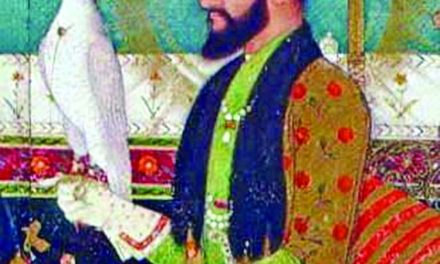
Lalbagh Fort
Among the great paradigms of Mughal architecture built in and around Dhaka, one of the more well-known ones is the famous Lalbagh Fort. The fort, though left incomplete, is adorned with an elaborate Mughal-style garden and stands by the River Buriganga in the old part of Dhaka. Its construction was commenced in 1678 A.D. by Muhammad Azam Shah, the son of Mughal emperor, Aurangzeb, during his viceroyalty in Bengal. But soon after, he was called to Delhi by his father and the responsibility of this fort was handed over to Shaista Khan, the new Subadar (Governor) of Dhaka at that time.
Lalbagh Fort is a beautiful landmark which draws in locals and foreign tourists alike. The 18-acre fort complex comprises three buildings — the mosque, the tomb of Pari Bibi and the Diwan-i-Aam (or Hall of Audience). The most significant of these is Pari Bibi’s Mausoleum. The interior of the building has nine chambers, the central of those holding Pari Bibi’s tomb. This room is covered by an octagonal-shaped dome, which has been overlaid in bronze. The mausoleum is the unique edifice within the fort that was created with materials brought in from various places, like the black basalt from Rajmahal Hills that made up the roof, or the white marble from Rajputana adorning the floor.
Most commonly, people know Pari Bibi’s tomb to be bearing the remains of Iran Dukht, Shaista Khan’s eldest daughter, who passed away unexpectedly and at a young age. It is said that her sudden death made Shaista Khan think the fort was a bad omen which led him to leave it unfinished and as we see it today.
But a lot of historians believe that the tomb bears not Iran Dukht but the Princess of Ahom, a woman lost in the endless pages of history.
At the start of 1662, under Mughal Emperor Aurangzeb’s order, Mir Jumla, one of his best Subadars, set foot to invade Assam, a state situated in northeastern India. After a year of the seemingly futile war, with neither side succeeding, a treaty was signed in Ghilajharighat in January of 1663 under the rule of the Tipam Raja of that time. The Mughals received various valuables as peace offerings from the Ahom King, Jayadhwaj Singha, including his daughter, Ramani Gabharu, as well as his niece, the daughter of the Tipam Raja.
Having fallen severely ill during the war, Mir Jumla died while on their journey back to Dhaka with the two princesses in tow. Thus, Ramani was put under the care of Shaista Khan when the convoy returned to Dhaka. She was given a new name (Rahamat Banu) and taught to practise Islam, as ordered by Aurangzeb.
In 1667, she was married to Muhammad Azam Shah, becoming his first wife. She was fondly called Pari Bibi (meaning fairy) and was said to have been the Prince’s favourite because of her breathtaking beauty, as written in a monograph, “Glimpses of Old Dhaka”, by historian Syed Muhammad Taifoor.
However, this theory was challenged by Ahmad Hasan Dani, a Pakistani archaeologist, who stated that Pari Bibi was actually Iran Dukht who was staying in Dhaka along with her sister, the evidence of which is seen in a document signed by Shaista Khan himself and was married to Muhammad Azam Shah as well. But Syed Muhammad Taifoor debunks this statement in his book, writing that, by then, the Prince was already married to four women and a fifth marriage would be a violation of Islamic law(which states a man can be married to up to four women at a time).
Whether it be Iran Dukht or Ramani Gabharu, the roots of these misconceptions lie in the fact that their lives and deeds were deemed unworthy or unimportant to be written about, thus leaving us with little information to find out the truth. History tends to overlook women and their influence in forming the past we learn of today. Open any history book and one will find endless tales of bravery and sacrifices by men at any given time. But the same can never be said about women, although they have, in many cases, done no less.
Women were viewed as mere possessions, often given away as peace offerings and dowries, which would help in ending wars or starting new alliances. Yet, we see little to no data of these women who had to be brave when being forced to leave behind their families, friends and home, essentially sacrificing themselves. Instead, they were taken advantage of, mistreated and used, in more situations than one. No one spoke of their boundless loyalty to their homeland as they did of that of men.
Ramani Gabharu was one woman of such loyalty. In 1679, her maternal uncle, Laluksola Borphukan, offered Saraighat, a part of Guwahati, to the Mughals for money and their support in making himself the next in line to the throne of Assam. When news of that reached Ramani, she wrote a letter to her uncle, advising him to not commit treason. Her words were not taken into consideration by power-hungry Laluksola. This piece of important information was written in a treatise by Surya Kanta Bhuyan, a renowned writer and historian of his time in Assam, in 1951.
Ahom culture was known for its documentation of their rich history and “buranjis”, which were historical chronicles often written by state officials, noblemen and sometimes the royal families themselves. Yet we know little to nothing about one of their own. Ramani had been given away at the mere age of six, yet she was dutiful to her home and people, trying what she could to stop it from getting conquered. Yet she, along with the Tipam Raja’s daughter, were essentially forgotten, made into a distant memory of a mere trade. Jahnabi Gogoi Nath, professor of History at Dibrugarh University in Assam, said, “Though we find in the chronicles the evidence of Ramani Gabharu being given to the Mughals as a part of the peace treaty, that Tipam princess was sent along as a xokhi (a friend) but little mention is found in those scripts about what happened to her. So you can say she is more or less a forgotten character of Ahom history simply because she was a woman.”
Now, Pari Bibi’s mausoleum remains as an eye-catching historical site, visited by many who may only know a woman of royalty lies under those stone slabs. Only a few are aware of the confusion it brings forth and the possibility that a forgotten princess may be the one that resides beneath. It’s sad to think as time goes on, the true identity of Pari Bibi may get lost and what will remain is just another mystery of the past.





